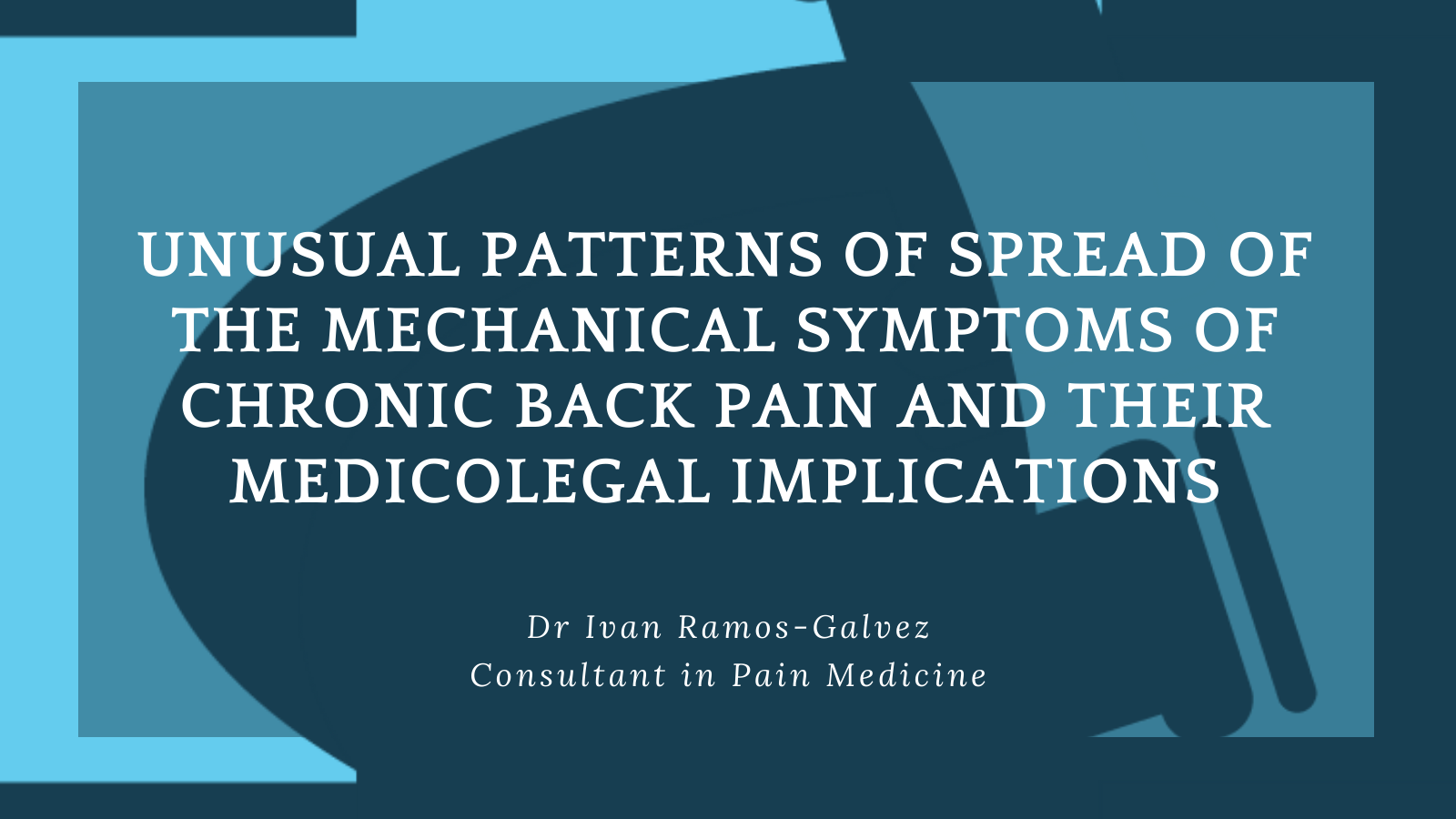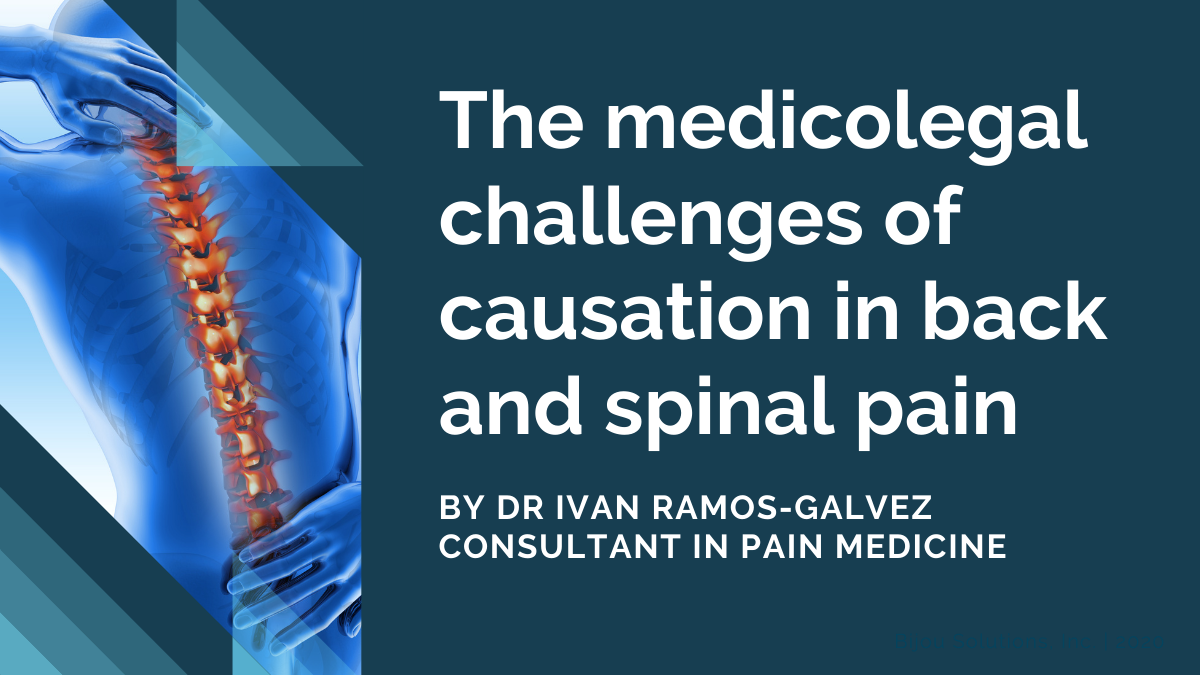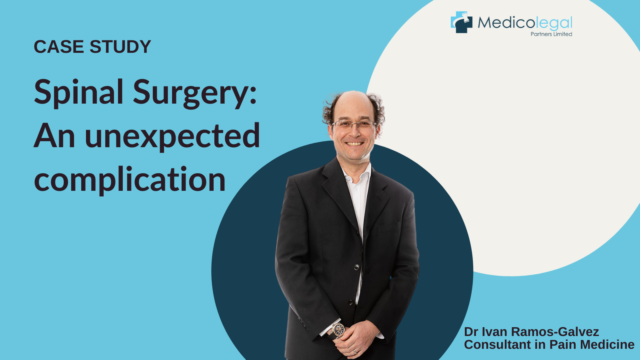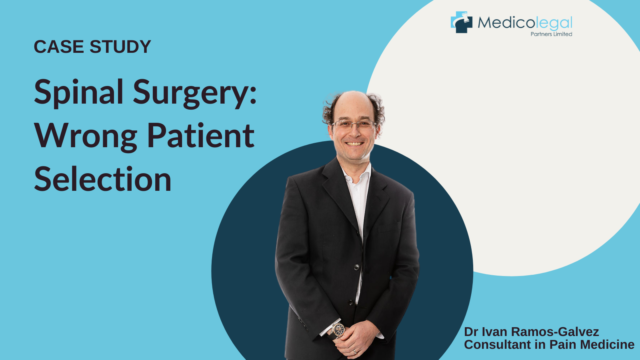Unusual patterns of spread of the mechanical symptoms of chronic back pain and their medicolegal implications

Back pain is one of the commonest reasons for a patient to visit their doctor, and it is estimated that around 80% of adults will suffer from it at least once during their lifetime. Back pain is associated with many conditions, most of which are not serious and, with conservative treatment, resolve within a few weeks. Around 97% of all back pain is mechanical in origin, meaning that it arises from an injury to one of the structures within the musculoskeletal spine. As the exact cause of the pain is often difficult to determine, the condition is often referred to as nonspecific back pain. However, advances in diagnostic techniques such as imaging and a better understanding of spinal anatomy, including the nerve supply to this area, mean that more specific diagnoses can now often be made. This is important, because an accurate diagnosis is the first step in deciding upon an appropriate treatment plan.
Mechanical back pain frequently occurs in the lumbar region, as the five vertebrae that make up this portion of the spine are responsible for absorbing and distributing most of the body’s weight when the person is upright, whether static or actively moving. Typically, patients experience pain in a single region of the lower back, although this sometimes spreads into one or both buttocks or thighs. The pain usually eases when the patient is lying down but can be exacerbated by movement, coughing and sneezing.
However, in many cases it is not possible to pinpoint the exact cause of the pain. Common causes include overstretching of the muscles or ligaments surrounding the spine, leading to a sprain. Alternatively, there may be an issue with one of the intervertebral discs. Herniation of the discs often results in mechanical back pain. Often patients describe the onset of symptoms, which include sharp pain in the back and down the back of the legs, following a ‘pop’ in the back during activities such as heavy lifting. Another condition affecting the discs is internal disc disruption, in which the inner nucleus of one or more intervertebral discs becomes desiccated and degraded. Issues involving the facet joints of the spine can also give rise to back pain. In older patients, arthritis may develop in these joints, and trauma, particularly whiplash-type injuries, can also frequently result in facet joint pain.
Although better techniques are available to assist in the diagnosis of back pain, this is generally not necessary as the majority of cases resolve quickly, even if a precise diagnosis is never made. Indeed, current UK guidelines stipulate that imaging techniques such as x-rays and scans should not be routinely used in cases of nonspecific back pain. However, where symptoms do not fit the usual pattern, closer investigation may be warranted. In particular, pain that develops gradually and gets progressively worse over days or weeks, constant pain that is not eased by resting or lying down, pain that travels to the chest, or weakness or numbness in the buttock, leg or foot may indicate a more serious underlying cause.
Pain radiating into one or both of the legs is often an indication of compression of the spinal nerves. This can happen when the spinal canal or the passages for the spinal nerves narrow, during a process known as spinal stenosis. This condition tends to affect older adults and is associated with degenerative processes in the spine that cause bone or tissue to grow in such a way as to obstruct the spinal canal. If back pain is accompanied by rapidly progressing neurological symptoms, such as numbness in the genital/buttock area, urinary or faecal incontinence or loss of bladder sensation, cauda equina should be suspected. This condition occurs when the nerves at the very bottom of the spinal cord become compressed. Although rare, it represents an emergency and requires urgent treatment, which may include surgical intervention. Failure to do so risks permanent damage to the affected nerves and a subsequent impact on the patient’s quality of life.
A sudden onset of severe pain can indicate the occurrence of a vertebral compression fracture (VCF), where one of the vertebrae collapses. While these are usually the result of force or trauma, such as a fall, they are also frequently associated with osteoporosis. In such patients, even simple actions such as lifting or bending forwards may lead to a VCF, particularly in the elderly. It is therefore important to consider VCF as a possible diagnosis in these circumstances, particularly as the condition can sometimes give rise to spinal stenosis and nerve compression. If the fracture is very unstable, surgical stabilisation should be considered. Decompression may also be necessary where the spinal canal has been compromised and neurological symptoms are present.
Mechanical back pain is an extremely common condition from which most adults will suffer at some point. In many cases, the exact cause is never pinpointed and the condition resolves quickly, although minor recurrences are common. However, in around 1% of cases, there is a serious underlying cause which must be identified as soon as possible so that appropriate treatment can be given. It is therefore vital that any unusual symptoms are investigated fully.
Further reading:
Chien, J. J., & Bajwa, Z. H. (2008). What is mechanical back pain and how best to treat it? Current pain and headache reports, 12(6), 406–411. https://doi.org/10.1007/s11916-008-0069-3
https://patient.info/bones-joints-muscles/back-and-spine-pain/lower-back-pain




